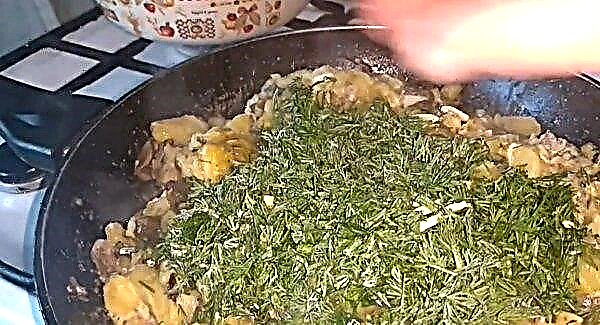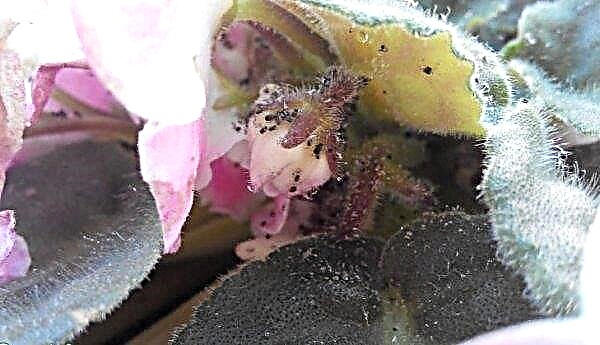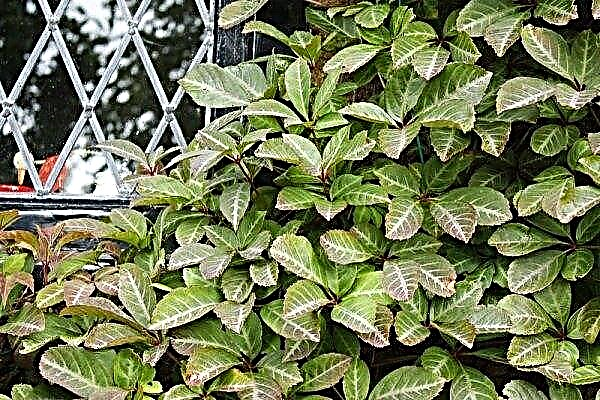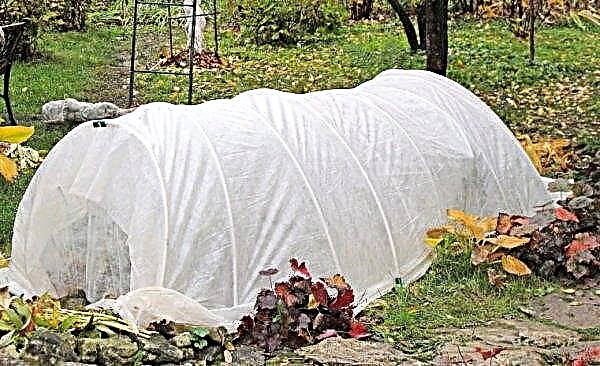Notocactus are popular unpretentious plants that occupy an honorable place among indoor flora and belong to the cactus family. Easy care, a large and lush flower that blooms on the plant under favorable growing conditions, make this genus more and more popular among prickly "relatives". Consider a detailed description of the plant and the features of its cultivation at home for comfortable growth, plentiful and long flowering.
Botanical description of the plant
Notocactus is a small spherical plant of a dark green color, with characteristic ribs, like in other representatives of the cactus. Each rib contains areoles covered with slight pubescence. Areoles have 1-3 large and up to 35 small spines. The length of the whole plant usually does not exceed 20 cm when grown at home, and in the natural habitat grows up to 1 m in height.
A distinctive feature of notocactus is the presence of a large beautiful flower at the top of the plant during flowering. The flower has a funnel shape, grows on a short fleshy stalk, the color of the bud varies from yellow to red.
Flowering usually occurs in the summer and lasts all summer, at the beginning of autumn a small fruit appears in place of the flower. South America is considered to be the birthplace of notocactus, and you can meet the plant in countries such as Bolivia, Brazil, Argentina, Uruguay and Paraguay. Notocactus grows on shaded areas of high hills covered with bushes and thickets. Occasionally found on rocks and cliffs.Did you know? The first mention of notocactus was recorded in the works of the German botanist Karl Schumann in 1898. It was he who first distinguished notocactus in a separate subgenus of echinocactus.
Main types
In total, there are 25 types of notocactus, but the most popular are 5, the description of which must be considered in more detail so that it is easier to choose a specific specimen for home growing.
Notocactus Otto
In the wild, lives in the southeastern part of the South American continent. The plant has a spherical stem, reaching 15 cm in diameter. This type of notocactus is distinguished by the possibility of the appearance of many children near the mother plant, in addition, an adult instance is able to produce underground stolons (shoots), at the end of which new plants are formed. Adult specimens contain from 8 to 12 rounded wide ribs that are covered with needle-shaped spines: up to 4 large central ones and up to 20 small radial ones. Otto's notocactus blooms in yellow, white or red buds.
Adult specimens contain from 8 to 12 rounded wide ribs that are covered with needle-shaped spines: up to 4 large central ones and up to 20 small radial ones. Otto's notocactus blooms in yellow, white or red buds.
Notocactus Leninghouse
Representatives of this species are the highest, compared to other notocacti, they have a long slender stem of a cylindrical shape, about 1 m high. The diameter of the stem does not exceed 15 cm. About 30 ribs are located on the stem. Flowering occurs only when the stem grows to 20 cm. The bud of this notocactus is yellow, small, in diameter reaches 4–7 cm, depending on the age of the specimen.
Notocactus slim
The plant is also called sunny notocactus, because its flowers are bright yellow in color. The stem is spherical, up to 10 cm in diameter and 6 cm in height. Notocactus has up to 20 ribs, with white-yellow areoles that are covered with thorns of different sizes. Each areola contains up to 4 long central spines and up to 10 small radial spines. During flowering, bright yellow buds appear on the stem, reaching 7 cm in diameter.
Notocactus Yubelman
The stem of this notocactus is spherical-flattened, height - up to 10 cm, diameter - up to 15 cm. The specimen has 15 ribs, passing from the base to the apex from flattened to round-convex in shape. The plant is distinguished by the presence of large (up to 1 cm) oval areoles that contain 1 thick long (up to 4 cm) and up to 6 small radial spines. A large spine is located in the lower part of the areola and is directed downward. Yubelman's notocactus blooms with flowers of dark red, orange-yellow or yellow, reaching a size of 7 cm.
Notocactus Rech
Notocactus Rech is a dwarf species, grows in height no more than 7 cm and up to 5 cm in diameter. The stem has up to 18 ribs, small areoles with 4 long central spines and up to 6 small radial. The flower is up to 3 cm in diameter, has a lemon yellow color.
Important! All of the listed notocactus, except for Otto, can be found in the wild only in South America in the Brazilian state of Rio Grande do Sul.
A distinctive feature of the Rekh variety is that at the base of the stem daughter notocactuses can grow, forming small "families".
How to care for notocactus at home
Caring for notocactus at home is simple, but has some nuances that are mandatory for consideration.
Location selection and lighting
When choosing a place to place notocactus, attention should be paid to lighting. Notocactus prefer scattered or direct sunlight, therefore it is better to place a container with notocactus on a southeast or southwest window. The south window is also suitable for accommodation, but in the summer the notocactus requires shading from direct scorching sunlight at lunchtime.
In winter, in addition to placing the pot in direct sunlight, additional illumination with a phytolamp is required, prolonging daylight hours up to 10 hours a day.
Temperature mode
A moderate temperature regime in the range of +22 ... + 25 ° C in the room where the notocatus is located is optimal for the normal existence and flowering of the plant. A short increase in air temperature to + 38 ° C does not have a negative effect, for example, if you take the pot out into the street in the summer and place it in the shade. In winter, it is better to grow notocactus at lower temperature values of +8 ... + 10 ° C.
Air humidity
Notocacti, like regular cacti, are not sensitive to low or high air humidity. It is not recommended to carry out humidification from the spray gun even during periods of excessive dryness, for example, during the heating season, so as not to provoke decay of the flower.
Did you know? Notocactus was considered a separate genus only in 1920, after a long study of plants by botanists Alvin Berger from Germany and Albert Vojtech Fritsch from the Czech Republic. Notocactus was finally recognized as a separate genus in 1938, when the criteria and boundaries of the genus were officially certified.
How to water in winter and summer
From the end of spring to the beginning of autumn, the notocactus should be watered abundantly and regularly, preventing the soil from drying out. It is recommended to water 2-3 times a week, but at the same time monitor the condition of the soil. When the topsoil dries, it is recommended to repeat watering with settled water at room temperature. During the period of lowering the room temperature, which occurs in autumn and continues in winter, watering is reduced to 1 time per week, gradually bringing to 1 watering in 2 weeks in winter.
Fertilizer and fertilizing
It is necessary to feed the notocactus in the spring-summer period, introducing special mineral fertilizers for cacti, which can be purchased at any flower shop. It is necessary to prepare and use top dressing taking into account the information on the package.
Important! Prefer top dressing with a high content of potassium, since notocactus is very sensitive to a lack of this component in the soil.
Soil transplant
For growing notocactus, a soil with a loose structure is suitable, which contains a sufficient amount of impurity in the form of sand and has a slightly acidic or neutral reaction. The ideal option is to use a purchased substrate for succulents, which is sold in any flower shop.
In addition, several options for high-quality soil mixtures can be prepared independently:
- to connect clay soil with sand in a ratio of 1: 1;
- mix 1 part of sheet land, 1 part of turfy land, 1 part of peat land, 2 parts of sand, and 0.5 parts of crumb brick.
 Notocactus transplantation should be carried out as necessary, there are no specific dates, since the growth rate of each specimen is individual and depends on many factors. It is necessary to transplant the plant if the stem has already outgrown the size of the pot or the root system does not fit into the container and crawls out. For transplantation, choose a slightly larger pot (3-4 cm in diameter).
Notocactus transplantation should be carried out as necessary, there are no specific dates, since the growth rate of each specimen is individual and depends on many factors. It is necessary to transplant the plant if the stem has already outgrown the size of the pot or the root system does not fit into the container and crawls out. For transplantation, choose a slightly larger pot (3-4 cm in diameter).Breeding methods
There are 2 main ways of propagating notocactus, which we consider in more detail.
Vegetative propagation
Some types of notocactus can produce lateral processes that are used to propagate plants. To separate and root the young shoot, use a sharp knife. Cut the process as low as possible, carefully separating it from the mother plant. It is better to carry out the procedure in spring or summer so that young shoots take root faster, since in winter this process is slow.
Important! Cut the young shoot is necessary completely. If part of the process is left on the mother plant, it may begin to rot.
The cut off shoot should be left in a warm, dry, sunny place for 7 days to dry the cut. Dried processes root quickly and do not rot. To root the dried out process is necessary in a mixture of pure river sand (1 part), charcoal (0.5 part) and sphagnum moss (1 part). Watering a young plant is done infrequently to exclude the possibility of its decay. It is enough to water the plant once a week with boiled water at room temperature.
Seeds
Reproduction of notocactus by seeds is carried out in early spring. Purchased seeds are treated with a weak solution of potassium permanganate (potassium permanganate is used on a knife tip for 1 liter of cold boiled water). It is necessary to withstand planting material for disinfection during the day, then rinse under running water, dry it with a paper towel and leave it for 2 days on a warm sunny windowsill to completely dry the seeds. After the specified time, the seeds can be sown in a prepared substrate (1 part coarse sand, 1 part rotted leaf soil, 1 part charcoal).
For planting, a wooden low container is used, which is filled with the prepared mixture. The depth of sowing seeds is 1-2 cm, the distance between each seed is 3-4 cm. After sowing the seeds, the container is covered with glass or a transparent plastic film and left on a well-lit, warm window sill. Every day, the greenhouse is opened for ventilation and soil moisture is checked.
When the top layer of the substrate dries, spraying is carried out from the spray gun with water at room temperature. After the first seedlings appear, the shelter is completely removed, and each plant is watered under the root. When the seedlings reach a height of 2 cm, they can be transplanted into separate pots.
How to care immediately after buying a plant
After the acquisition of notocactus, it must be quarantined, installed on a separate windowsill, away from other indoor plants. At first, the cactus should be pritenit from direct sunlight, regardless of whether a purchase was made in winter or summer. All plants in flower shops are sold in transportation soil, which is not suitable for long-term cultivation, therefore, 2 weeks after full adaptation to new conditions, notocactus should be transplanted into a new substrate.
Important! When purchasing a new plant, it is imperative to inspect it for the presence of diseases, pests, stalk integrity, so that in the future there will be no problems in the growing process.
The transplant process is as follows:
- After release from the tank, install the peat ball in warm water so that it is well softened.
- Release the root system from the remains of the transport substrate, leave the plant for 1 day in an upright position to dry the roots from excess moisture.
- Land the notocactus in the usual way using a soil mixture, the composition of which was discussed above.
 Further care for notocactus is carried out in accordance with general recommendations.
Further care for notocactus is carried out in accordance with general recommendations.How to deal with diseases and possible pests
Notocactus do not have strong immunity to common diseases, so they are often affected:
- Fusarium - a fungal disease that affects the roots and gradually moves to the top of the plant. The main symptoms of the disease are reddish spots on the stems, wrinkling of the stems. It is impossible to cure the disease, therefore, adhere to general preventive measures: observe the temperature of cultivation, the rules of irrigation and top dressing.
- Spotted rust - fungal disease, which manifests itself as rusty spots on the stems. Fighting the disease is necessary by treating the plant with a Bordeaux mixture, a solution of copper sulfate, according to the instructions on the package.
Among the pests that can harm notocactus, there are:
- Shield - a small insect that settles on the stem of a cactus and feeds on the sap of a plant, the cactus withers, turns yellow and dies. To get rid of the pest, the plant is treated with fungicides ("Actara" or "Mospilan", according to the instructions on the package).

- Spider mite - a small insect of a dark brown color that settles on the plant, feeds on its juice, biting through the stems, the plant dries up or decays with regular watering. You can notice the pest by the thin abundant web, with which the tick covers the needles of notocactus. Fight with a spider mite should be preparations "Fitoverm", "Karbofos", spraying the stem according to the instructions on the package.
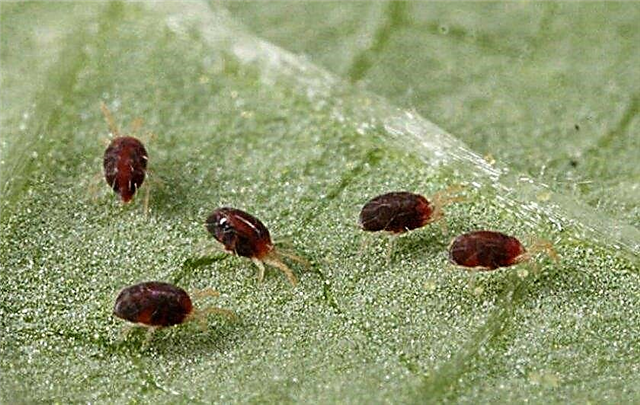
- Mealybug - light insects with a wax coating on the body, which settle on the stems of notocactus and feed on their flesh. A characteristic difference in the defeat of the plant is the appearance on the stem of white lumps, similar to cotton wool. Places that have been damaged by pests become dark in color, can begin to rot. Fight with a mealybug should be "Karbofos", "Fufanon", according to the instructions for the preparations.
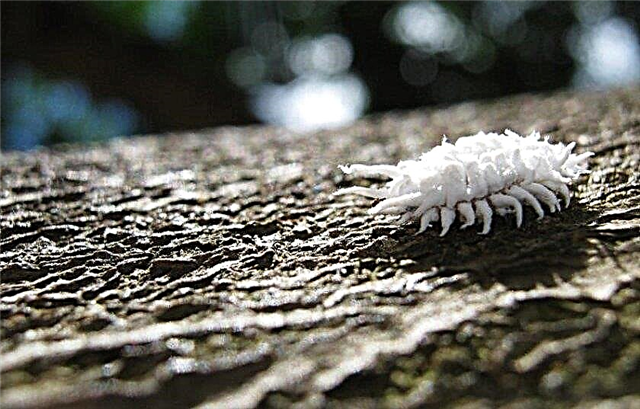
Thus, it is very simple to grow unusual flowering notocactus at home, if you follow the basic rules of care and timely treatment for diseases and pests.






